Lesser known ports along Hooghly river played an important role in Bengal trade – GetBengal story
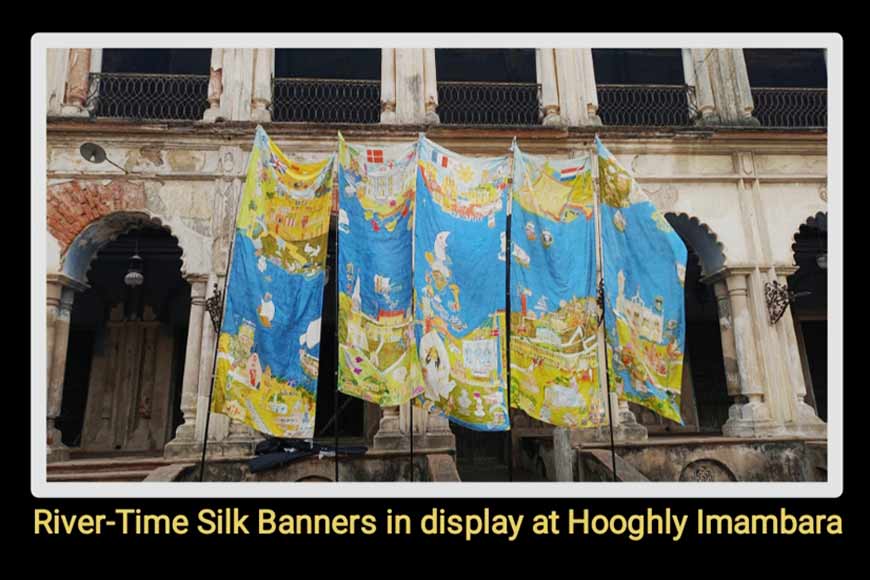
The importance of ports and their significance in trade routes are well-documented, but often, only selective ports receive attention. Kolkata port holds historical significance as the first place where the East India Company arrived and established itself as a colonial power. However, the ports surrounding Kolkata, though important, are less known. The ports along the Hooghly river, which had once upon a time attracted many colonial powers since the 17th century, are a wealth of history that remains largely unexplored in Indian history.
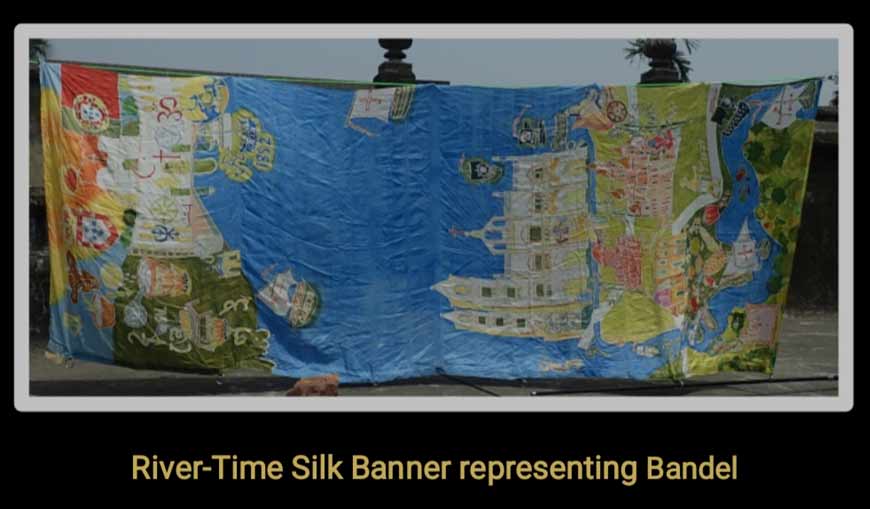
A recent international seminar organised by the Department of Vocation, Serampore College in association with IQAC, University of Liverpool, UK, shed light on this fascinating history through the “River-Time Silk Banners” project. This project, titled 'A Case Study of Visual Communication for Commercial Purposes,' showcased interesting anecdotes and previously unknown history. The seminar featured Dr. Ian. H. Magedera, a senior lecturer at the University of Liverpool and Principal Investigator of the Hooghly River of Cultures Project, and Neline Mondal, lead artist of the silk banners and a heritage activist focused on maintaining and raising awareness about Bengal's heritage, particularly in river bank town of Serampore.
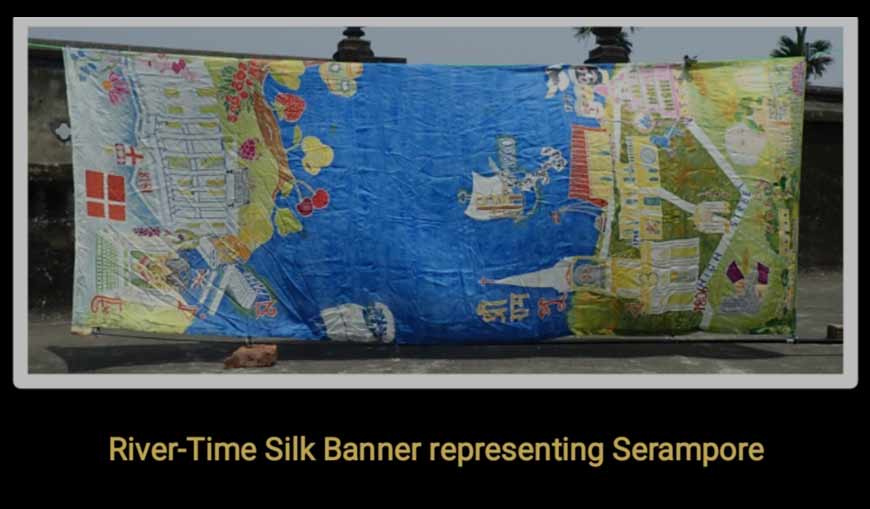
Many stories were told through these silk banners. For instance, the first passenger train in India was the 32-kilometre line between Bombay and Thane, opened in 1853. Similarly, Eastern India’s first passenger train was the 39-kilometre line from Howrah to Hooghly, inaugurated on 15th August 1854. Before railways became popular, however, the river Ganga, also known as the Ganges or Bhagirathi, played a crucial role in trade, transportation, and tourism. This historical pattern of using sea routes for trade expansion is evident globally, such as Britain's colonisation of America and the East. These countries "discovered" India through sea routes and ports, leading to colonisation and subsequent independence struggles.
Also read : The sky over river Hooghly
Delving further into history, the Hooghly River witnessed interest and growth from five major countries: Portugal, the Netherlands, France, England, and Denmark. These countries established their trade centres in five towns along the banks of the Hooghly. These towns—Bandel, Chinsurah, Chandannagar, Serampore, and Barrackpore—were developed by the respective countries between the 1660s and 1770s. Together, they form a unique and rich heritage corridor that is now sporadically becoming a concern for national and international institutions. This history dispels the myth that only the English colonised India, as other countries also left their mark before the English "discovered" Bengal or began trading with it.
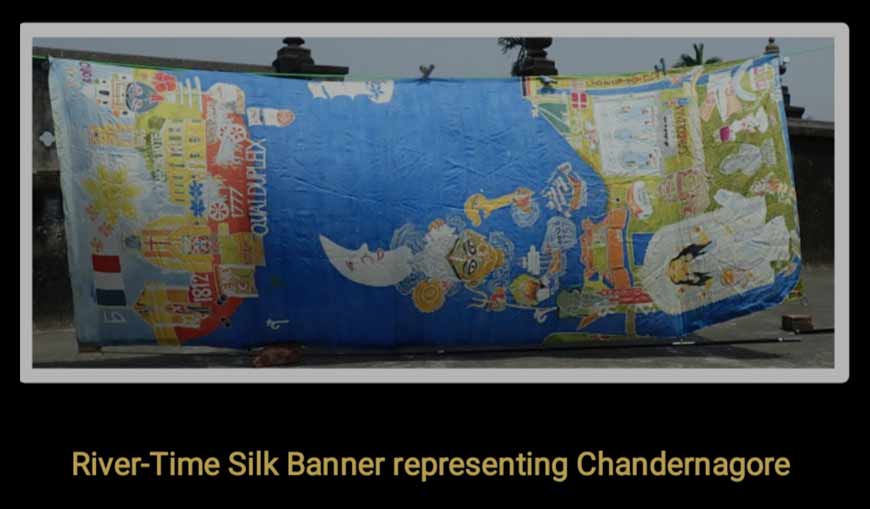
Despite the expansion of social media and the concept of a 'global village,' this historical information remains largely obscure or requires extensive online research to find. An exhibition tour aimed to expand the reach of this historical information and highlight the uniqueness of the heritage corridor. Visitors and students remarked that it felt like stepping into a time machine, experiencing Hooghly as Europeans did before the arrival of railways in the 1850s. The proximity of these towns to each other along the river, with five different European settlements across a stretch of only 35 kilometres, is truly remarkable. Despite their closeness, these towns were distinct, each established by a different country, showcasing rivalry and expansion in action.
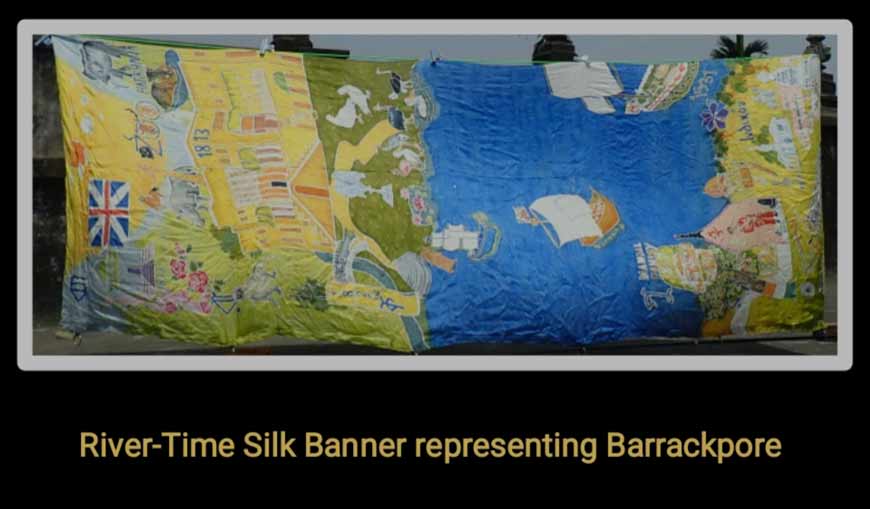
The exhibition displayed five multicoloured silk banners depicting the five major trade centres before the arrival of railways. The lead artist, Neline Mondal, used premium Murshidabad silk for the banners, each measuring 10 x 3.5 feet. These silk banners reimagined the five trade centres as they might have appeared before the arrival of railways (1396 to 1854), offering a glimpse into how Europeans might have seen these towns from their perspective. The participating institutes included Panihati Tran Nath High School, Panihati Balika Vidyalaya, Sukchar Satadal Balika Vidyayatan, and the PTNHS 125th Celebration Committee for Panihati Heritage Awareness. This initiative, amidst Kolkata's prominence as a megacity, highlights the importance of other historical towns and aims to bring attention to the little-known heritage of Bengal.
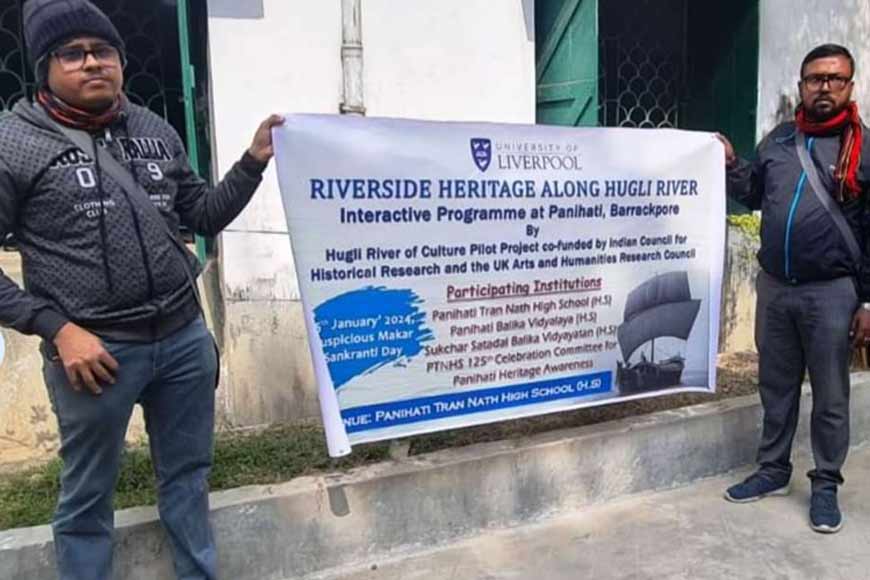
The principal investigator of the Hooghly River of Cultures Project is also leading the 'Riverside Heritage Along Hooghly River' project to increase national and international awareness. This project is co-funded by the Indian Council for Historical Research and the UK Arts and Humanities Research Council. It is refreshing to see history that has almost been removed from books, being reintroduced, aiming to re-establish the importance of the River Hooghly in Bengal in terms of trade and commerce through sea routes.










